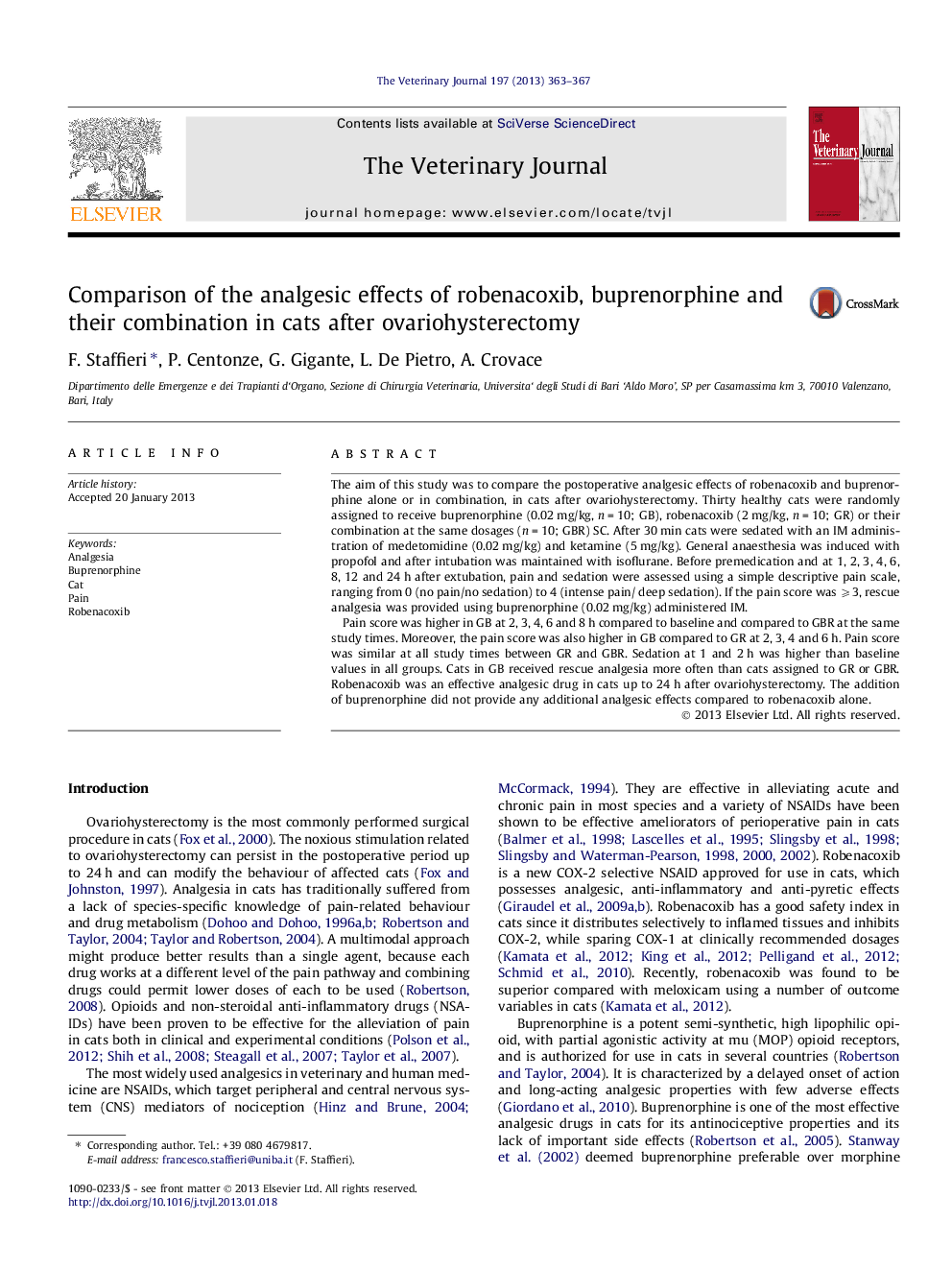| Article ID | Journal | Published Year | Pages | File Type |
|---|---|---|---|---|
| 5798268 | The Veterinary Journal | 2013 | 5 Pages |
The aim of this study was to compare the postoperative analgesic effects of robenacoxib and buprenorphine alone or in combination, in cats after ovariohysterectomy. Thirty healthy cats were randomly assigned to receive buprenorphine (0.02 mg/kg, n = 10; GB), robenacoxib (2 mg/kg, n = 10; GR) or their combination at the same dosages (n = 10; GBR) SC. After 30 min cats were sedated with an IM administration of medetomidine (0.02 mg/kg) and ketamine (5 mg/kg). General anaesthesia was induced with propofol and after intubation was maintained with isoflurane. Before premedication and at 1, 2, 3, 4, 6, 8, 12 and 24 h after extubation, pain and sedation were assessed using a simple descriptive pain scale, ranging from 0 (no pain/no sedation) to 4 (intense pain/ deep sedation). If the pain score was ⩾3, rescue analgesia was provided using buprenorphine (0.02 mg/kg) administered IM.Pain score was higher in GB at 2, 3, 4, 6 and 8 h compared to baseline and compared to GBR at the same study times. Moreover, the pain score was also higher in GB compared to GR at 2, 3, 4 and 6 h. Pain score was similar at all study times between GR and GBR. Sedation at 1 and 2 h was higher than baseline values in all groups. Cats in GB received rescue analgesia more often than cats assigned to GR or GBR. Robenacoxib was an effective analgesic drug in cats up to 24 h after ovariohysterectomy. The addition of buprenorphine did not provide any additional analgesic effects compared to robenacoxib alone.
